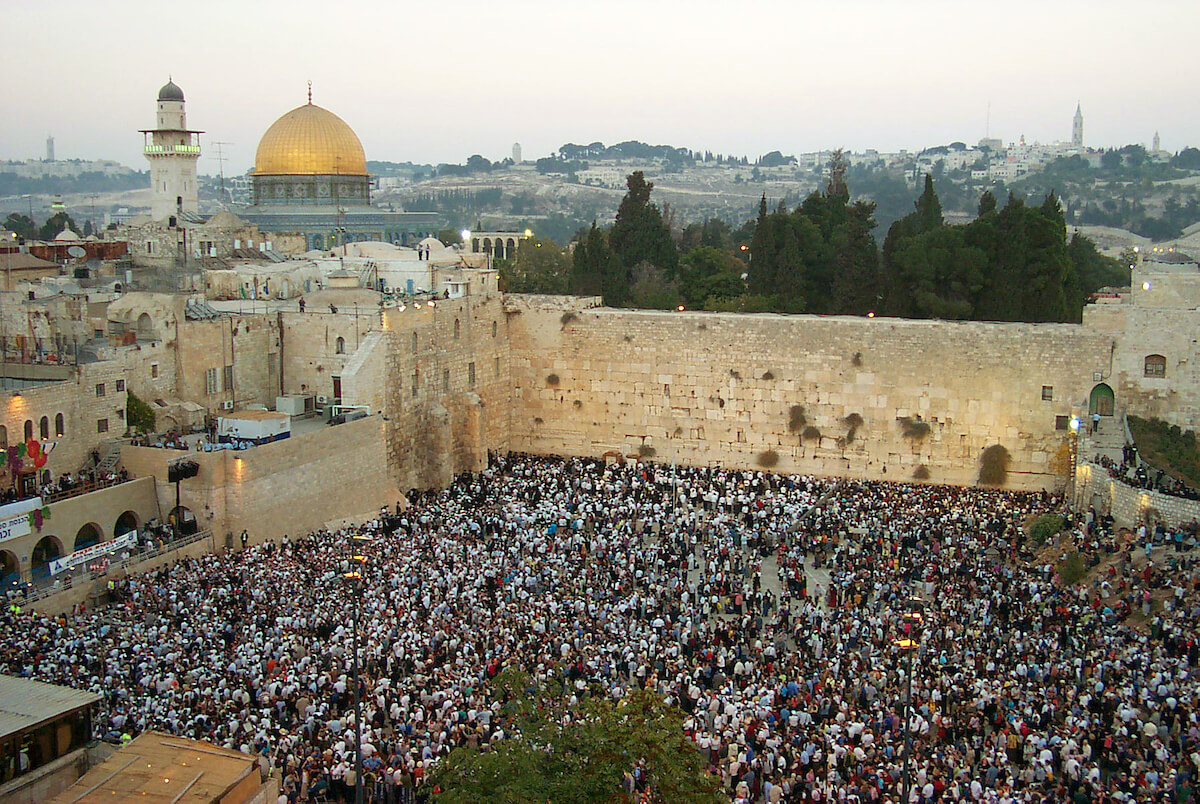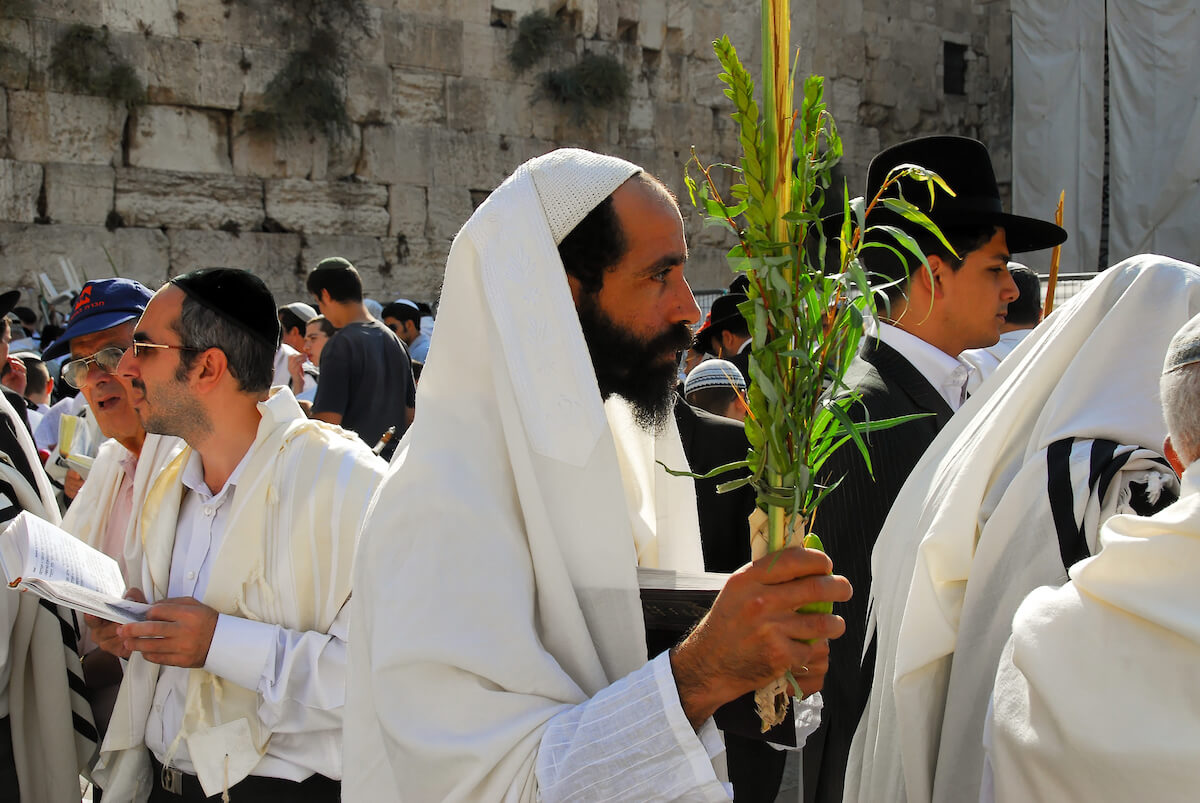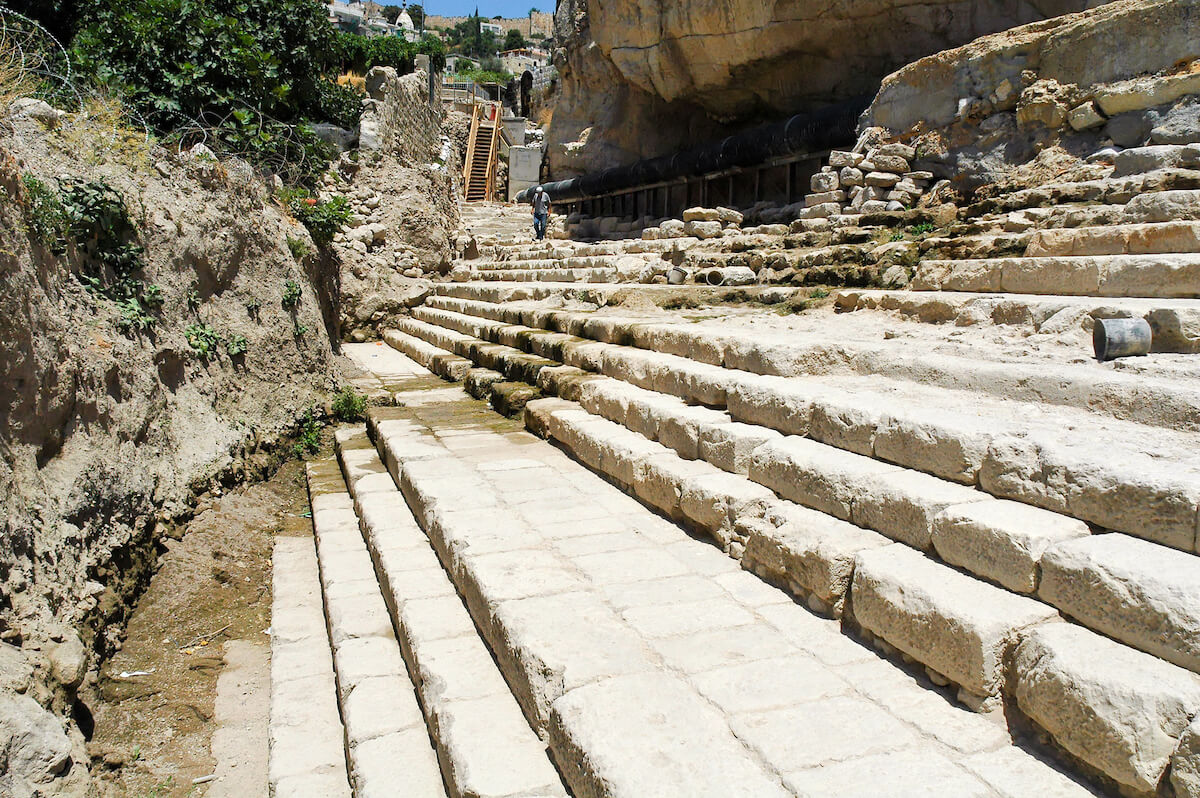If you’ve ever camped, you know that camping requires we forgo a lot of conveniences. The Feast of Tabernacles required similar sacrifices. In fact, it remains a timeless reminder that everything we possess—both physically and spiritually—comes from God.

(Photo: Western Wall at Sukkot. Courtesy of the Pictorial Library of Bible Lands)
Of all places, an ancient pool in Jerusalem—the Pool of Siloam—helps us connect Sukkot with its ultimate fulfillment.
A statement made by Jesus—really, an invitation—makes it clear.
The Purpose of Sukkot (The Feast of Tabernacles)
If you’d like a great movie about modern Sukkot, watch Ushpizin. I laughed out loud when the family’s uninvited guest sliced the expensive etrog—a citron reserved for Sukkot—and casually ate it. Clearly, he had no clue to its significance! Although the movie’s English subtitles translate the Hebrew, the movie leaves the traditions of Sukkot, or the Feast of Tabernacles, for the viewer to decode.
How puzzling the holiday must seem to those unacquainted with its modern customs—much less its biblical foundations. The original purpose of feast centered on an essential reminder:
Speak to the sons of Israel, saying, ‘On the fifteenth of this seventh month is the Feast of Booths for seven days to the LORD. . . . You shall live in booths for seven days; all the native-born in Israel shall live in booths, so that your generations may know that I had the sons of Israel live in booths when I brought them out from the land of Egypt. I am the LORD your God.’—Leviticus 23:34, 42-43
Sukkot provided a time to remember how God had delivered His people from bondage and how He had provided for them in the wilderness. Jews still observe these customs today, and the Mishna describes in exacting detail how they should construct their booths. Sukkot marked the most joyful of the biblical feasts, because the harvest’s labor finally ceased.
In gratitude to the Lord for His provision, the people would begin their hope for the latter rains.

(Photo: Man with four species of Sukkot at Western Wall. Courtesy of the Pictorial Library of Bible Lands)
In the English Bible, the Hebrew term Sukkot is translated “Booths” or “Tabernacles” (Deuteronomy 16:13 and Leviticus 23:34).
The Bible also refers to the holiday as:
- “the Feast of the Harvest” (Exodus 23:16)
- the “Feast of Ingathering” (Exodus 34:22)
- “the feast” (1 Kings 8:2; 2 Chronicles 7:8-9; John 7:37)
- “the feast of the Lord” (Leviticus 23:39)
At Sukkot, every seven years on the sabbatical year, the Law was read in the hearing of all Israel (Deuteronomy 31:10-11).
The “Four Species” of Sukkot
During the Second Temple period, the Sadducees understood the Bible’s command to take branches of “leafy trees and willows” (Leviticus 23:40) as the building materials for their booths. The Pharisees, on the other hand, interpreted the foliage as what the worshippers would carry in their hands.
- The rabbis identified the “fruit” of Leviticus 23:40 as the etrog—a citron which the worshipper would carry in the left hand.
- The right hand would hold three species of branches—the palm, the willow, and the myrtle.
Every year in modern Jerusalem, Sukkot draws hundreds of thousands of worshippers to the Western Wall—all holding the Four Species in their hands.
Sukkot and the Pool of Siloam
In addition, the Feast of Tabernacles required sacrifices of sin offerings and burnt offerings. At the time of preparation for the morning sacrifice, a priest would descend to the Pool of Siloam—amidst great music, celebration, and singing of Isaiah 12:3—and fill a golden pitcher with water. This ceremony is today called Simchat Bet Hasheavah (The Mishna, Sukkah 5:1).

(Photo: Pool of Siloam excavations. Courtesy of the Pictorial Library of Bible Lands)
After dipping his pitcher in Siloam’s water, the priest would return to the Temple Mount via a road that ascended the Central Valley (you can walk part of this road today from the Siloam Pool). Once at the Temple, he would pour the water into one of the silver basins by the altar.
For many years the Pool of Siloam was thought to be the upper pool beside the exit of Hezekiah’s Tunnel. Discovered near the turn of the 20th century, this pool dates only to the fifth century AD.
Workers accidentally discovered the true Pool of Siloam from the Second Temple period in 2004 while digging a sewer line. Archaeologists have uncovered only a portion of this lower pool, exposing the entire north side—more than 225 feet long. Tourists can visit there today.
Jesus and Sukkot
In addition to looking backward at God’s historical blessings on Israel, Sukkot looked ahead to the time when all nations will celebrate the Feast of Tabernacles in Jerusalem in honor of Israel’s reigning Messiah (Zechariah 14:16-21).
Perhaps for this reason, during the Second Temple period one year, on the last and greatest day of Sukkot, Jesus drew upon this tradition of pouring water to illustrate a point:
If anyone is thirsty, let him come to Me and drink. He who believes in Me, as the Scripture said, ‘From his innermost being will flow rivers of living water.’—John 7:37–38
Comparing physical thirst to spiritual thirst, Jesus offered the promised Holy Spirit to anyone who would believe in Him. The people had sung the words of Isaiah 12:3: “Therefore you will joyously draw water from the springs of salvation.”
Isaiah prophesied of what Israel would sing of the Lord “on that day”—during the Millennial Kingdom of the Messiah. Try reading Isaiah 12 in that context. Its 6 verses are powerful!
Jesus offers that same salvation today to anyone who will believe in Him for forgiveness of sins.
See The Holy Land In Person
Journey to the Bible Lands with Wayne Stiles. You will NEVER be the same! Learn more:
Tell me what you think: Why do you think the Bible draws a connection between water and salvation? To leave a comment, just click here.

